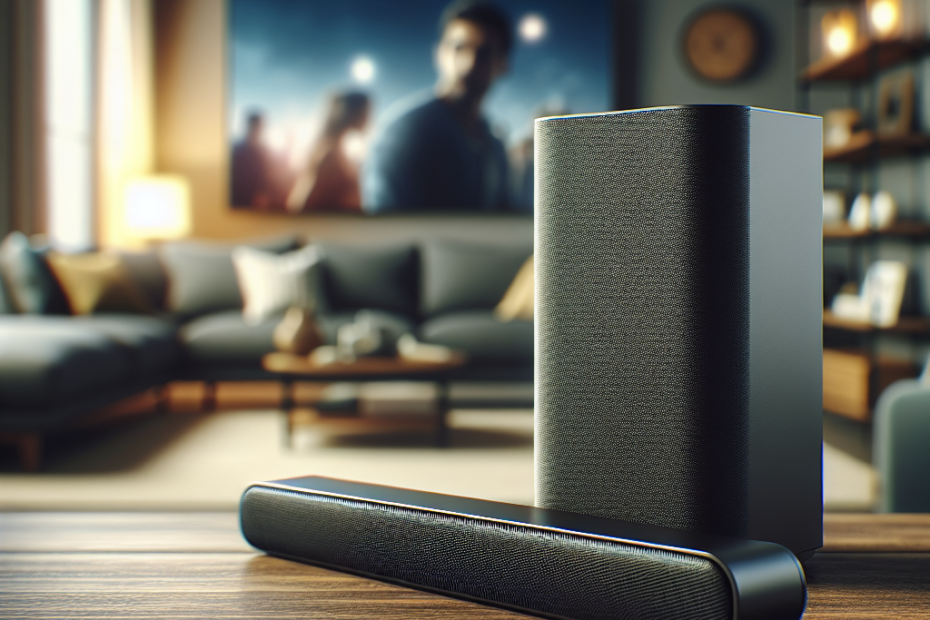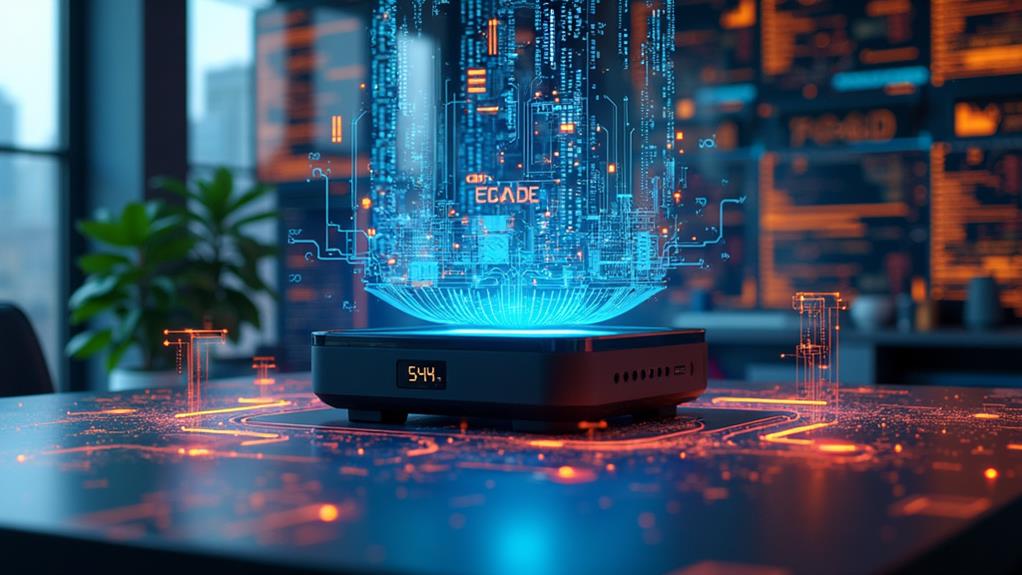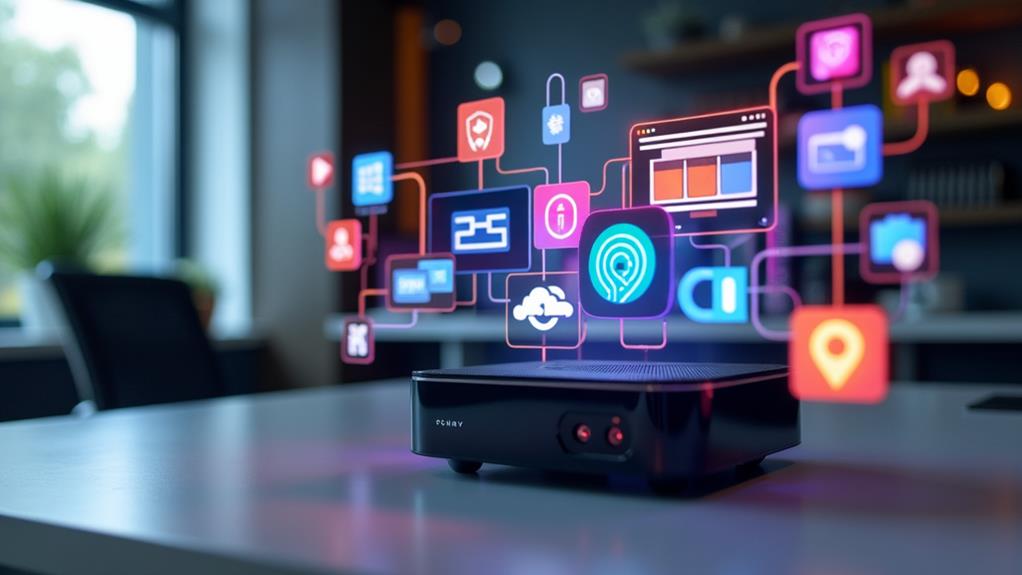



Ready to transform your mini PC into the ultimate home theater experience? Look no further, because in this article, we have got you covered with all the essential accessories you need. From wireless keyboards that allow you to browse effortlessly from the comfort of your couch to versatile HDMI splitters for seamless connectivity, we will guide you through the must-have accessories that will turn your mini PC into a complete home theater setup. Get ready to elevate your movie nights and enjoy immersive entertainment like never before.
Display
Monitor
A monitor is an essential component of a home theater PC setup. It provides a visual display for all your media content. When choosing a monitor for your home theater PC, you should consider factors such as screen size, resolution, and connectivity options. Opting for a larger screen size will enhance your viewing experience, while a higher resolution will result in sharper images. Additionally, ensure that the monitor has HDMI or DisplayPort connectivity for easy connection to your mini PC.
Projector
If you’re looking for a larger and more immersive display for your home theater PC, a projector is the way to go. Projectors offer the advantage of creating a cinema-like experience in the comfort of your own home. When selecting a projector, consider factors such as brightness, resolution, and throw distance. Higher brightness levels are suitable for brighter rooms, while a higher resolution will ensure crisp and clear images. Additionally, check the throw distance to ensure that the projector can be positioned appropriately in your space.
Audio
Speakers
To create a truly immersive home theater experience, you’ll need a set of quality speakers. There are various types of speakers to choose from, including bookshelf speakers, floor-standing speakers, and surround sound speaker systems. When selecting speakers, consider factors such as sound quality, power output, and connectivity options. High-quality speakers will enhance the audio experience and bring your movies and TV shows to life.
Soundbar
If you prefer a more streamlined audio setup, a soundbar is a great option. Soundbars are compact, all-in-one speaker systems that provide a significant audio upgrade compared to TV speakers. They usually come with built-in amplifiers and multiple drivers to offer enhanced sound quality. When choosing a soundbar, look for features such as wireless connectivity, subwoofer support, and virtual surround sound technology to maximize your audio experience.
Home Theatre System
For the ultimate audio experience, a home theater system is the way to go. These systems typically consist of multiple speakers, including a central speaker, front speakers, surround speakers, and a subwoofer. The speakers work together to deliver immersive surround sound for a truly cinematic experience. When exploring home theater systems, consider features such as sound formats supported (e.g., Dolby Atmos), amplifier power, and connectivity options.
Audio Receiver
An audio receiver is an integral part of a home theater PC setup. It acts as the central hub for connecting all your audio devices, such as speakers, gaming consoles, and Blu-ray players. The receiver processes audio signals and distributes them to the appropriate speakers, providing you with seamless sound. When selecting an audio receiver, consider factors such as the number of audio channels, power output, connectivity options, and supported audio formats.
Input Devices
Keyboard
A keyboard is an essential input device for controlling your home theater PC. It allows you to navigate through media libraries, adjust settings, and input text. When choosing a keyboard, consider factors such as connectivity options (e.g., USB or wireless), backlit keys for low-light environments, and multimedia keys for quick access to playback controls. Additionally, compact and ergonomic designs can be beneficial for comfortable use in your home theater setup.
Mouse
While a keyboard is vital for text input, a mouse complements it by offering precise cursor control and easy navigation. Choose a mouse that is comfortable to use for extended periods, and consider features such as wireless connectivity, adjustable DPI (dots per inch) for different sensitivity levels, and programmable buttons for customization. Wireless mice provide the added convenience of untethered control and reduce clutter in your home theater setup.
Remote Control
A remote control is a must-have accessory to conveniently operate your home theater PC from a distance. Look for a remote control that is compatible with your mini PC and offers all the necessary functions for media playback, volume control, and navigation. Some remote controls come with backlit buttons for easy use in dark environments and may also offer additional features like programmable macros to streamline your home theater experience.
Storage
External Hard Drive
An external hard drive is essential for expanding your storage capacity on a home theater PC. With the ever-increasing size of media files, having extra storage is crucial for storing your favorite movies, TV shows, and music. Look for external hard drives with ample storage space, fast data transfer speeds (e.g., USB 3.0 or USB-C), and compatibility with your mini PC’s operating system. Additionally, consider rugged models for added durability and portability.
Network Attached Storage (NAS)
If you have a vast media library or multiple devices accessing media simultaneously, a network attached storage (NAS) device is a valuable addition to your home theater PC setup. NAS devices are essentially storage servers that connect to your home network, allowing easy access to your media files from any device on the network. When selecting a NAS, consider factors such as storage capacity, data transfer speeds, RAID support for data redundancy, and compatibility with media server software.
Connectivity
HDMI Cable
HDMI cables are the go-to choice for connecting your home theater PC to the display, whether it’s a monitor or a projector. Ensure that you use high-quality HDMI cables that support the required resolution and audio formats. When choosing an HDMI cable, consider factors such as cable length, durability, and features like gold-plated connectors for better signal transmission. Opting for HDMI cables that are certified for the latest HDMI standards will future-proof your setup.
Ethernet Cable
For a stable and reliable network connection to your home theater PC, using an Ethernet cable is highly recommended. Ethernet cables provide faster and more consistent data transfer speeds compared to Wi-Fi, resulting in smoother streaming and quicker file transfers. When selecting an Ethernet cable, consider factors such as cable length, cable category (e.g., CAT6 for Gigabit Ethernet), and durability. Additionally, ensure that your mini PC and router have Ethernet ports for a wired connection.
Wi-Fi Adapter
If running an Ethernet cable to your home theater PC is not feasible, a Wi-Fi adapter can provide wireless connectivity. Look for Wi-Fi adapters that support the latest wireless standards (e.g., Wi-Fi 6) for faster and more reliable connections. Consider features such as dual-band support for accessing both 2.4GHz and 5GHz networks, high-gain antennas for better reception, and compatibility with your mini PC’s operating system. Additionally, USB adapters offer portability and flexibility in positioning.
Streaming Services
Netflix
Netflix is a popular streaming service that offers a vast library of movies, TV shows, and documentaries. With a subscription, you can access a wide range of content in different genres, including original productions. Netflix provides high-quality streaming and supports various devices, including home theater PCs. To enjoy Netflix on your home theater PC, ensure that you have a reliable internet connection and download the official Netflix app or access it through a compatible web browser.
Hulu
Hulu is another popular streaming service known for its extensive collection of TV shows, including current episodes from various networks. In addition to TV shows, Hulu also offers a selection of movies and original content. To access Hulu on your home theater PC, you’ll need a subscription and a compatible web browser or the official Hulu app. Enjoy ad-supported or ad-free streaming depending on your subscription plan, and take advantage of features like offline downloads for on-the-go viewing.
Amazon Prime Video
As part of an Amazon Prime subscription, Amazon Prime Video offers a wide range of movies, TV shows, and original content. With a massive catalog of on-demand content, including exclusives and popular titles, Amazon Prime Video is a compelling streaming service for home theater PC users. To access Amazon Prime Video, either download the app or access it through a compatible web browser. Enjoy features like 4K Ultra HD streaming and offline downloads for a seamless viewing experience.
Media Player Software
Kodi
Kodi is a free and open-source media player software that transforms your home theater PC into a versatile multimedia hub. It supports a wide range of audio and video formats and allows you to organize and play your media files with ease. Kodi offers a customizable interface and various add-ons to expand its functionality, including access to streaming services, weather updates, and more. With its wealth of features, Kodi is a popular choice among home theater enthusiasts.
Plex
Plex is a media server software that enables you to stream your media files across different devices in your home network. It organizes your media library and provides a beautiful and user-friendly interface for easy navigation and playback. Plex also offers remote access, allowing you to stream your media outside your home network. By installing the Plex app on your home theater PC, you can enjoy seamless streaming of your favorite movies and TV shows.
VLC Player
VLC Player is a versatile media player software known for its wide-ranging format support. It can play virtually any audio or video file, making it a reliable choice for home theater PC users. VLC Player offers features like media file conversion, subtitle support, and customizable playback controls. With its simplicity and robustness, VLC Player is a popular choice for those seeking a no-nonsense media player for their home theater setup.
Cables and Adapters
Audio Cable
Audio cables are essential for connecting your home theater PC to audio devices like speakers, soundbars, or audio receivers. Opt for high-quality audio cables with standard connectors like 3.5mm or RCA, depending on the devices you’re connecting. Ensure that the cables are of suitable length and offer good shielding to minimize interference and maintain audio quality. Additionally, consider cables with gold-plated connectors for better conductivity and durability.
Video Cable
Video cables are crucial for connecting your home theater PC to the display device, whether it’s a monitor or a projector. HDMI cables are the most common choice as they support high-definition video and audio transmission. Choose high-quality HDMI cables that can handle the required resolution and feature desirable attributes like durability, gold-plated connectors, and support for HDMI standards required by your devices. Alternatively, consider other video cables like DisplayPort or DVI depending on your setup requirements.
USB Hub
A USB hub is a useful accessory for expanding the USB connectivity options on your home theater PC. With many devices requiring a USB connection, such as external hard drives, keyboard, mouse, and Wi-Fi adapters, a USB hub allows you to connect multiple devices simultaneously. Look for USB hubs that offer USB 3.0 or USB-C ports for faster data transfer speeds. Consider compact and powered hubs depending on your space constraints and power requirements.
Power Management
Surge Protector
To protect your valuable home theater PC and connected devices from power surges, using a surge protector is highly recommended. A surge protector safeguards against voltage spikes and ensures a stable power supply. When selecting a surge protector, consider factors such as the number of outlets required, joule rating (higher rating offers better protection), and features like surge protection status indicators and USB charging ports. Protect your equipment and minimize the risk of damage caused by power surges.
Power Strip
A power strip is a convenient accessory for managing power distribution in your home theater setup. It allows you to connect multiple devices to a single power source and provides surge protection, minimizing cable clutter and protecting your electronics from voltage spikes. Look for power strips with a sufficient number of outlets for your devices, spaced to accommodate power adapters. Additional features like built-in USB ports and master/slave outlets for power conservation can provide added convenience.
Mounting and Accessories
TV Wall Mount
If you’re using a TV as your display device, a TV wall mount is an excellent accessory to consider. Wall mounting your TV not only saves space but also provides a clean and professional look to your home theater setup. Ensure that the TV wall mount is compatible with your TV’s size and VESA mounting pattern. Consider features like full-motion articulation, tilt, and swivel for optimal viewing angles. Additionally, check the weight capacity of the wall mount to ensure it can support your TV securely.
Cable Management
Cable management is crucial for maintaining a tidy and organized home theater setup. It prevents cables from getting tangled and reduces the risk of accidental damage. Consider using cable management solutions such as cable raceways, cable clips, or cable sleeves to route and conceal your cables neatly. Velcro wraps and cable ties can also help with keeping cables together and minimizing clutter. Well-managed cables not only enhance the aesthetics but also make maintenance and troubleshooting easier.
Screen Cleaner
Keeping your display device clean and free from dust and smudges is essential for optimal viewing pleasure. Invest in a screen cleaner specifically designed for your display type, whether it’s a monitor or a projector screen. Opt for non-abrasive cleaning solutions and microfiber cloths to gently remove dirt and smudges without causing damage. Regularly cleaning your display will ensure a crystal-clear viewing experience and prolong the lifespan of your equipment.
In conclusion, turning a mini PC into a home theater PC requires careful consideration of various accessories to enhance your audiovisual experience. From choosing the right display and audio components to ensuring seamless connectivity and proper cable management, each accessory plays a vital role in creating a fully immersive home theater setup. By understanding your needs and preferences, you can select the ideal accessories to transform your mini PC into a powerhouse for entertainment, bringing the cinematic experience right into your living room.
Disclosure: As an Amazon Associate, I earn from qualifying purchases.





